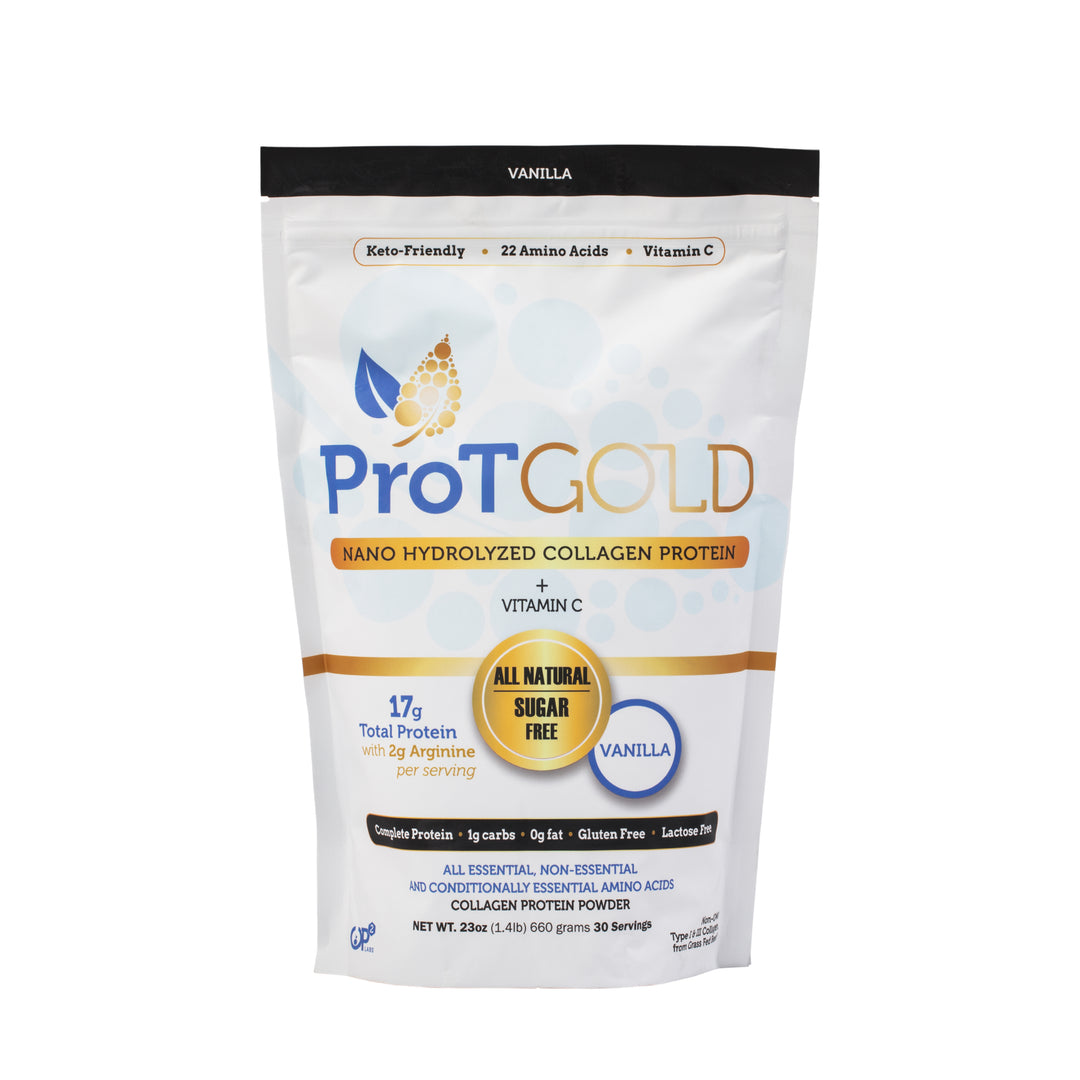What to Expect During the Wound Recovery Process
Whether you’ve been injured or are recovering from surgery, you want to know what to expect from the wound recovery process – and you want it to go as swiftly as possible.
No one wants to be laid up with a wound any longer than necessary, so in this blog we will go over what a normal wound recovery process looks like, some factors that can affect your recovery, and how to speed up your healing process.
The wound recovery process in four stages
There are four stages of a healing wound as follows:
Hemostasis
Right after a wound occurs, your body’s immediate response is to stop the bleeding. Blood vessels narrow to reduce blood flow, and a type of blood cell called platelets stick together to form a clot.
This stage prevents excessive blood loss and creates a barrier that helps protect the wound from germs.
Inflammation
The area around the wound becomes red, warm, swollen, and sometimes painful. This is because your body is sending white blood cells to fight off any potential infection and clean out damaged tissue.
The inflammation stage helps protect the wound from infection and starts the cleanup process so the wound can heal properly.
Proliferation
During the proliferation stage your body starts to build new tissue to replace what was lost. New blood vessels form to supply nutrients and oxygen, and cells called fibroblasts create new tissue (collagen) to close the wound. The wound gradually fills in and the edges start to pull together.
This stage is crucial for restoring the wound’s structure and function. It creates a new layer of skin or tissue that helps heal the wound.
Maturation
Over time, the new tissue continues to strengthen and mature. The collagen fibers reorganize and become more structured, which helps increase the strength and flexibility of the healed area. The wound gradually becomes less noticeable as it integrates into the surrounding tissue.
This final stage helps the wound gain strength and durability, making it more resilient to future stress or injury.
Now that you know these stages and signs of a healing wound, let’s discuss what can affect the length of the wound recovery process.
The wound recovery process based on surgery type
Depending on the type of surgery you have, the wound recovery process could look a bit different. For example, the recovery time for knee surgery could look very different from plastic surgery recovery.
Here are a few key factors that influence the wound recovery process:
Minor vs. major surgery
Minor surgeries, such as small skin excisions or arthroscopic procedures, typically involve less tissue damage and shorter recovery times.
Major surgeries, such as open-heart surgery or extensive abdominal surgeries, often require longer recovery due to more extensive tissue disruption and longer healing times.
Invasiveness
Minimally invasive surgeries, like laparoscopic procedures, generally lead to a faster wound recovery process compared to open surgeries. Minimally invasive techniques usually involve smaller incisions, less tissue trauma, and reduced postoperative pain.
Weight-bearing areas
Surgeries on weight-bearing areas, such as the hips or knees, can take longer to heal because movement and pressure on the area can delay the wound recovery process.
Sutures and drains
The use of sutures, staples, or drains can also impact the wound recovery process. Techniques that require drains or multiple layers of sutures might take longer to heal compared to those that are straightforward and don’t involve additional devices.
The wound recovery process based on underlying conditions
Several underlying conditions can significantly impact the wound recovery process, often by influencing the body's ability to heal efficiently. Here are some key conditions that can affect wound healing:
Diabetes
Diabetes can impair wound healing due to high blood sugar levels, which can affect blood flow and immune response. Diabetic patients may also experience reduced collagen formation and delayed wound closure.
Cardiovascular disease
Conditions such as peripheral artery disease (PAD) or chronic venous insufficiency can reduce blood flow to tissues, which is crucial for delivering oxygen and nutrients needed for wound repair.
Obesity
Excess body weight can contribute to poor wound healing through increased pressure on wound sites, poor circulation, and a higher risk of complications like infection.
Chronic kidney disease
Impaired kidney function can affect wound healing by altering electrolyte balance and fluid status, and by reducing the body’s ability to excrete waste products that can interfere with healing.
Immunocompromised states
Conditions that compromise the immune system, such as HIV/AIDS, cancer, or the use of immunosuppressive medications, can reduce the body’s ability to fight infections and promote tissue repair.
Autoimmune disorders
Diseases like rheumatoid arthritis or lupus can affect wound healing through chronic inflammation and tissue damage, which can impede the healing process.
Nutritional deficiencies
Malnutrition or deficiencies in specific nutrients (e.g., vitamins A, C, and E, zinc, or protein) can impair the body’s ability to produce collagen and new tissue, slowing down wound recovery.
Chronic infections
Persistent infections, such as chronic bacterial infections or fungal infections, can delay wound healing by continually causing tissue damage and inflammation.
Smoking
Smoking impairs blood flow and oxygen delivery to tissues, which can slow down the wound recovery process. It also increases the risk of wound infections and complications.
Hematologic disorders
Conditions like anemia or clotting disorders can affect the wound recovery process by compromising the blood’s ability to deliver oxygen and nutrients or by impairing the clotting process necessary for initial wound repair.
Managing these underlying conditions effectively and addressing any specific risk factors can help speed up the wound recovery process and overall healing outcomes.
How to speed up wound recovery
You want to get back on your feet and back to normal as quickly as possible, so here are our top tips for how to speed up wound recovery:
Don’t use alcohol
Putting alcohol on a wound to clean it is an old wives’ tale. If you listen to doctors today (and you should) then you absolutely should not put alcohol on your wound. Alcohol is too harsh and can actually damage healthy tissues, which will set back your healing time.
Keep the wound covered
It’s scientific fact that wounds heal faster covered than uncovered. Keeping a wound covered will not only protect the area from friction and infection, it also keeps the area moist, which aids in a swifter wound recovery process.
Of course, you shouldn’t just cover your wound and forget about it. Your doctor will give you instructions on how often you should change your wound dressings to keep the area clean.
Follow your doctor’s instructions
When dealing with wound care at home, it’s important to follow your doctor’s instructions to a T! If your doctor has told you to change your bandages twice a day, keep your wound area dry, or avoid lifting anything heavier than 5lbs, it’s crucial to listen to them.
Your doctor knows what they are talking about, and just because you don’t understand the importance of their instructions doesn’t make them any less important.
Disregarding your doctor’s orders can set back the wound recovery process significantly by reopening wounds or causing infection to set in.
Eat a wound healing diet
Your nutrition plays a more vital role in the wound recovery process than you might think. If you eat inflammatory foods like sugar, red meat, or fried foods, it will take longer for your wound to heal.
Also, there isn’t a good relationship between a plant based diet and wound healing. If you only eat plant proteins, you might not be getting enough amino acids to rebuild all the collagen tissues needed to fill in your wound.
Talk with your doctor about the best wound healing diet so you can ensure you are on the swiftest road to recovery.
Take collagen supplements
Taking a daily collagen supplement is one of the easiest ways to speed up your wound recovery process. There is a reason doctors use collagen in wound care – it’s the exact protein your body needs to heal wounds!
By giving your body extra collagen, you will actively be aiding in the wound healing process so you can heal more swiftly.
When looking for a collagen supplement to take, you want to ensure that your supplement is hydrolyzed or nano-hydrolyzed. This means it has gone through a chemical process to make it easier for your body to absorb and utilize.
If you take collagen in its whole form, such as through food sources, your body can only digest part of it. The rest will simply go to waste in your digestive tract.
Nano-hydrolyzed collagen protein will ensure you get the most healing potential out of your supplement.
Speed up your wound healing today
If you want to speed up the wound recovery process as much as possible, you have to follow all the tips on the list above. Simply changing your diet or changing your wound dressings won’t be enough to speed up wound healing on its own. At least, not to your body’s full potential.
Following your doctor’s instructions carefully, eating a wound healing diet, and taking a daily collagen supplement is the best way to speed up your wound healing.
Of course, not all collagen supplements are created equal. Just looking for a hydrolyzed collagen supplement might not be enough, because the scary truth is that most supplements aren’t regulated by the FDA.
What does this mean?
It means that supplement manufacturers can make any claims they want about their supplements and they don’t have to back any of them up. They could also be using harmful additives in their supplements that could set back your wound healing instead of speeding it up.
If you want to find a trusted collagen supplement, look for a medical-grade collagen supplement. This is collagen that IS regulated by the FDA and undergoes rigorous testing that is overseen by a medical professional.
Medical-grade collagen supplements are trusted by doctors and used in thousands of medical facilities across the country. If you want to speed up the wound recovery process, you can trust a medical-grade collagen supplement to help get you there.







